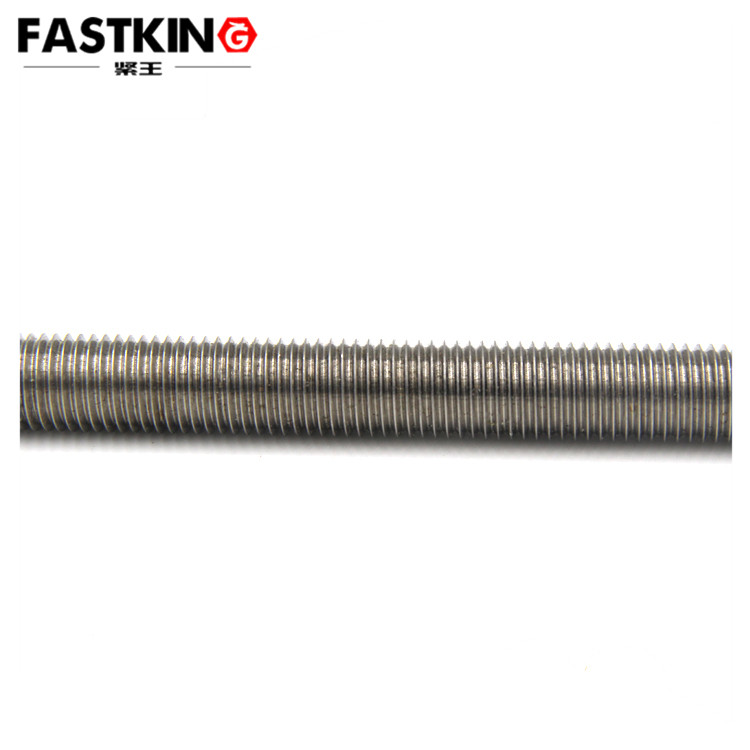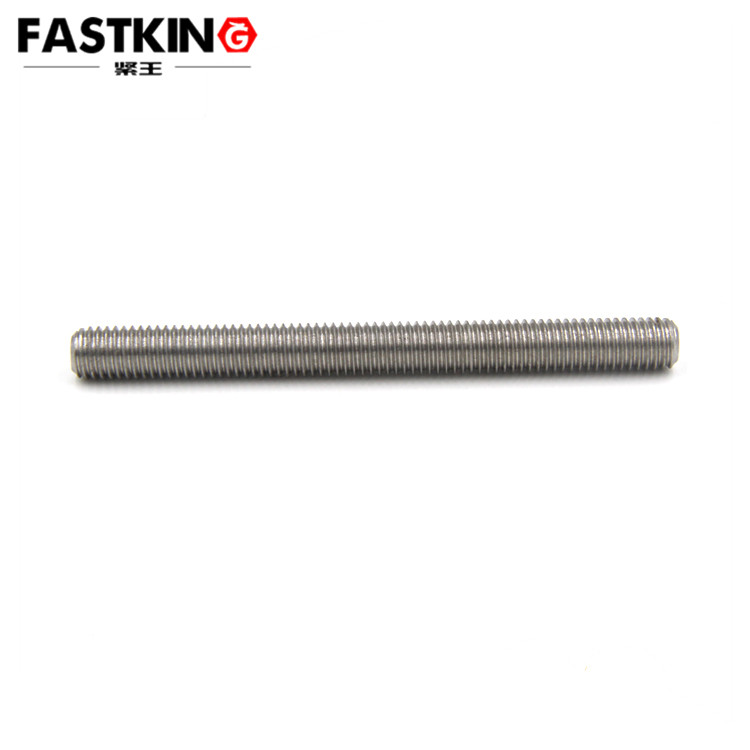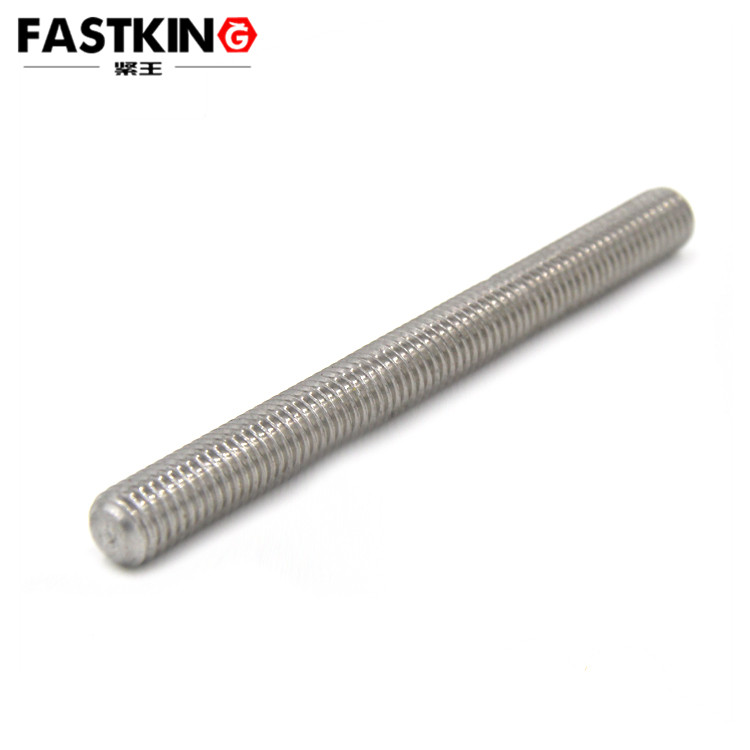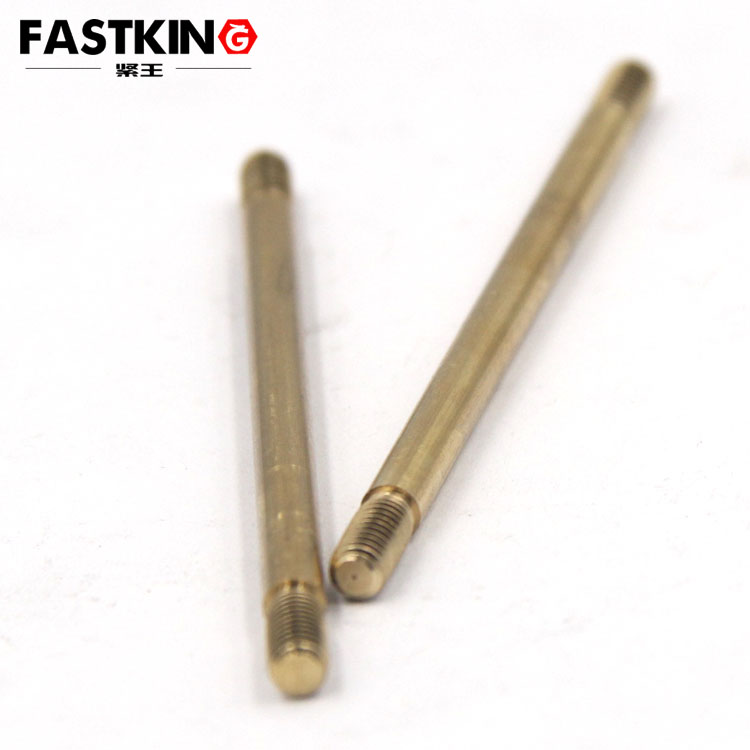Stainless steel bar / bar din975 din976
Material: stainless steel 304316, grade 8.8 high strength and grade 12.9 high strength
It can also support non-standard customization.
In essence, stainless steel threaded rods and bars belong to the category of fully threaded studs. Their core features include full-length threading and a headless design, with the only distinction being based on length: products with a length ≤ 1m are generally referred to as "threaded rods", while those with a length > 1m are customarily called "threaded bars". This fully threaded structure is distinctly different from the set screws introduced earlier — set screws focus on "positioning and fixing", whereas threaded rods/bars specialize in "connecting and fastening". They achieve rigid connection between two or more components by matching nuts at both ends, or serve as core components for adjustable supports.
The DIN975 standard (German Industrial Standard DIN975-1986), which serves as the manufacturing basis for these products, clearly defines their specifications: the nominal thread diameter covers a wide range from M2 to M52, and the thread pitch is divided into coarse and fine pitch specifications based on different diameters (e.g., M8 offers optional pitches of 1mm or 1.25mm, while M10 provides optional pitches of 1mm, 1.25mm, or 1.5mm). The mass per 1,000 pieces also increases with the specification (approximately 18.7kg for M2 and up to 14,700kg for M52). This standard also regulates material requirements: common materials for stainless steel threaded rods/bars include grades such as A2-70 and A4-70, and special stainless steels like ASTM A193 B8 can be used in high-end scenarios to ensure stability in harsh environments such as corrosion and high temperatures.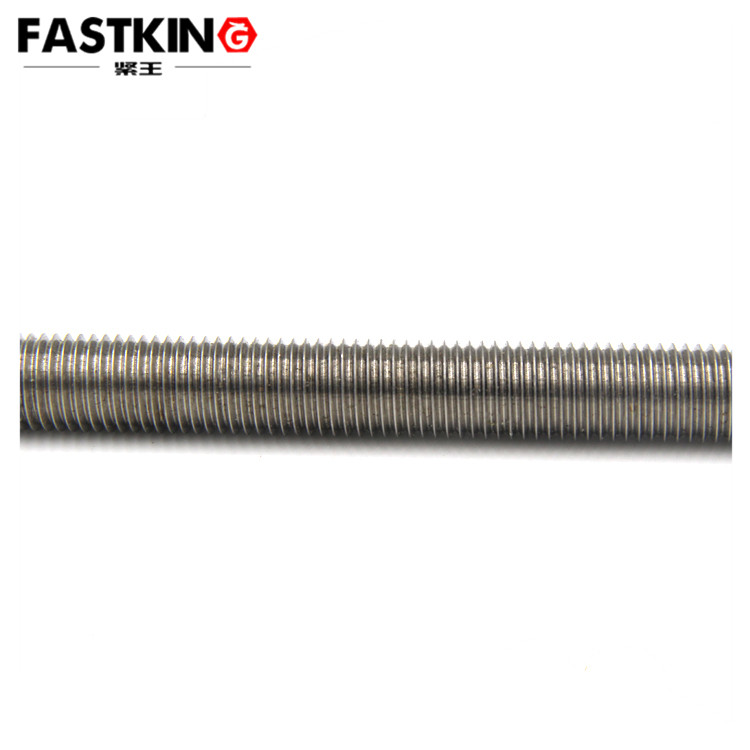
The core advantages of stainless steel threaded rods/bars stem from the dual empowerment of "material properties + structural design". In terms of materials, stainless steel endows them with excellent corrosion resistance and oxidation resistance. Compared with carbon steel, they are more suitable for harsh environments such as humid conditions and acid-alkali settings (e.g., chemical workshops, marine shipbuilding scenarios) and can maintain connection strength without frequent maintenance. In terms of structure, the fully threaded design offers three key benefits: first, strength advantage — the threaded cylinder with no cross-sectional sudden changes can evenly bear tensile and shear forces, and its load-bearing capacity is significantly superior to that of double-ended studs with smooth rods; second, installation flexibility — there is no need to pre-match fixed lengths; they can be directly cut according to on-site needs and fastened with nuts, making them particularly suitable for emergency maintenance and customized assembly of non-standard equipment; third, wide adaptability — they are compatible with various standard nuts and washers and can form stable connections with connected components made of multiple materials such as steel structures, concrete components, and plastic parts.
In terms of application scenarios, stainless steel threaded rods/bars cover all fields of light and heavy industry by virtue of their multi-dimensional advantages. In the petroleum and chemical industry, their corrosion resistance can resist the erosion of crude oil and acid-alkali solutions, and they are often used in key nodes such as pipeline support fixing and reactor seal cover connection to avoid the risk of medium leakage. In construction and bridge engineering, as fastening connectors for steel structure nodes or hoisting auxiliary parts for prefabricated components, large-specification threaded bars of M24 and above can bear hundreds of tons of tensile force to ensure the stability of long-span structures. In the medical equipment manufacturing industry, medical-grade stainless steel threaded rods such as A4-70, due to their non-magnetic and easy-to-clean characteristics, are used in precision components such as operating table adjustment mechanisms and imaging equipment brackets. In the textile printing and dyeing and shipbuilding industries, the former requires them to resist the corrosion of dyeing solutions for fixing printing and dyeing rollers, while the latter uses their seawater corrosion resistance to build the hull steel structure framework. Even in the decoration and mechanical hardware field, small-specification threaded rods (e.g., M3-M8) are often used as adjustable feet for furniture and fixed parts for equipment handles, balancing functionality and aesthetics.
Complementing the "precision positioning" function of set screws, stainless steel threaded rods/bars have become an important support in the fastener system with their "broad-spectrum connection" feature. From M2 micro electronic equipment brackets to M52 heavy-duty bridge components, and from 10cm small threaded rods to meter-long threaded bars, the standardized production of the DIN975 standard and the reliability of stainless steel materials make them play the role of "connecting links" in various industries, fully reflecting the core logic of "design based on scenarios and product selection based on needs" in fastener engineering

